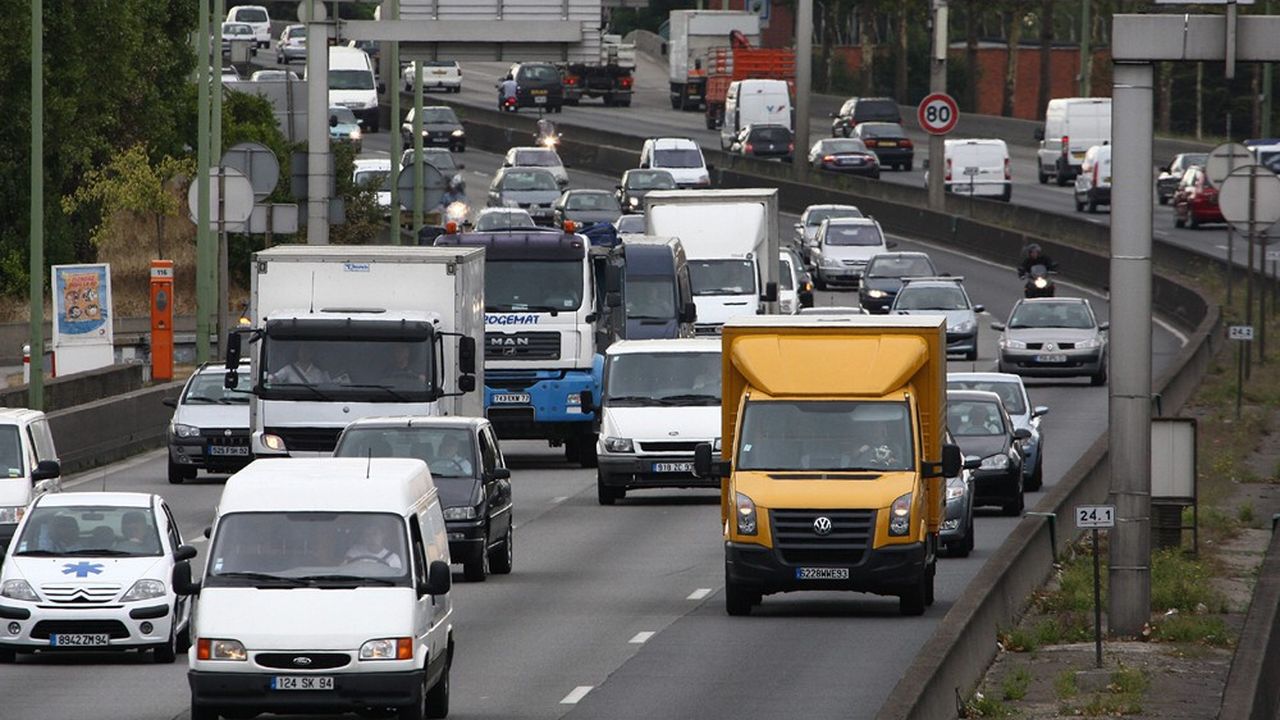Posted on Apr 13, 2021, 12:17 PM
Paris and its suburbs are stepping up their hunt for polluting vehicles. On June 1, vehicles classified Crit’Air 4 (diesel before December 31, 2005) will in turn be banned from the “Low Emission Zone” (ZFE), this territory of 79 municipalities within the ring of the A86. The most polluting vehicles, classified Crit’Air 5, have been banned since 2019. This new step extends the ban to 209,000 vehicles and 27,500 utility vehicles. In 2024, the ZFE should theoretically be done with diesel.
Supported by the Metropolis of Greater Paris (MGP), whose president, Patrick Ollier, proclaims “ the need to act against the 6,600 annual deaths generated by pollution ”, The measure aims to promote public transport and the conversion to electric and hybrid vehicles. State and Metropolis are giving themselves the time to educate themselves: video-tagging and fines will not come into effect until the end of 2021. In the meantime, hundreds of signs will be installed and mayors are asked to get involved. Three refused the ZFE, including Créteil and Bobigny.
18% of vehicles impacted in Seine-Saint-Denis
Because the conversion of the automobile fleet is not a formality. The tightening of technical control rules in 2019 caused the number of polluting vehicles to drop. But, recently recalled a study by the Paris Urban Planning Workshop (Apur), 11% of vehicles in the ZFE are classified Crit’Air 4 or 5. With strong territorial disparities. ” The department of Seine-Saint-Denis is the most impacted with 18% of the private vehicle fleet “, Notes the Apur, stressing that” l’support for populations modest is one of the success factors “. These municipalities are at the same time those where polluting vehicles are more numerous, the budgets the tightest, and the home-work trips less easy by transport. In the Kremlin-Bicêtre, one in two citizens will have to change car in 2022 with an average income of 1,850 euros, laments the mayor, Jean-Luc Laurent.
Aid, however, seems to abound, between the conversion bonus, the ecological bonus, and the ZFE surcharge … A one-stop-shop State-MGP has even seen the light of day. “ The cumulative subsidies can reach 19,000 euros for a new vehicle, and 12,000 euros for a second-hand vehicle, which brings the remainder down to around 1,500 euros for a second-hand vehicle. We have made a considerable effort »Assures Patrick Ollier. For a new electric vehicle, the remainder is 12,800 euros.
Metropolitan elected officials also wanted a zero-interest loan. They obtained a microcredit scheme of 5,000 euros repayable over five years announced in March by the Ministry of Transport. Intended for low-income households, operated by social support services (Adie, Red Cross, etc.), it will be 50% guaranteed by the State to lower rates. Some elected officials would have liked more. The ministry retorts to them that the microcredit will make it possible to include households excluded from the banking system and that the zero rate causes only a small gain compared to current bank rates.
It is also necessary that the inhabitants seize the aid. Between July 2019 and July 2020, barely 309 households made the request, for an average gain of 6,000 to 8,000 euros. According to the MGP, the health crisis has made communication more complex, and the craze will come with the ban, more massive – a quarter of vehicles – in 2022.
Professionals worry
Less wait-and-see professionals in the Ile-de-France region are worried. The health crisis has put them on hold. However, according to the Chamber of Trades and Crafts of Ile-de-France (CMA-IDF), 12% of craftsmen, owners of a Crit’Air 4 or 5 vehicle, are affected by the 2021 deadline. and 33% by that of 2022. Among the trades most affected, artisans and food traders, movers, very small construction companies, taxis, VTC and florists.
Eight out of ten are familiar with trips in the inner suburbs. They fear that they will no longer be able to visit their customers and suppliers or find themselves equipped with insufficiently autonomous vehicles, due to a lack of charging stations. They also fear “ not having sufficient financial capacity to be able to invest in new vehicles or renew the company’s vehicle fleet. This capacity to invest is greatly reduced by the context of the economic and health crisis (in particular for beneficiaries of the EMP or the solidarity fund) », Recalls the CMA-IDF.
The aid, which includes a contribution from the Region or the City of Paris, reduces the cost of a new utility vehicle from 29,000 euros to 12,000 euros, but it is still necessary to finance it! Discussions are underway with the MGP to obtain exemptions or a more spread out implementation for companies in difficulty benefiting from State aid, for those in the safeguard procedure, or for those whose self-financing capacity is insufficient.
–


